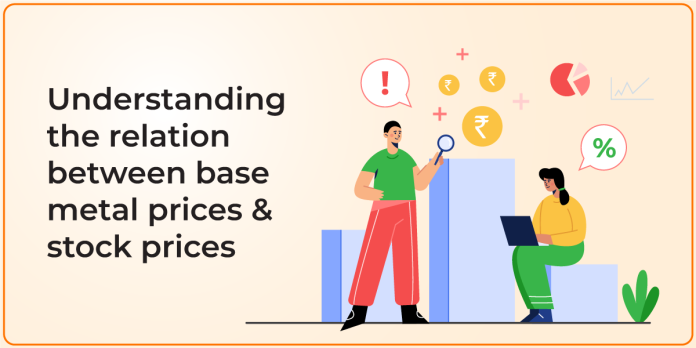Have you ever pondered the idea of trading in metals, crude oil, or agricultural products? It sounds intriguing, but the practicality of stockpiling mountains of agricultural produce or storing tons of oil at home is, of course, implausible. That’s where the commodities marketplace comes into play. In this marketplace, we don’t deal with the physical goods themselves but rather trade in derivative contracts.
Equity and commodities
Investors occasionally overlook the interconnectedness of equity and commodities markets. In reality, the prices of commodities exert a notable influence on equity stocks. When stock prices experience fluctuations, it’s often a direct result of changes in commodity prices, which, in turn, impact profit margins.
Understanding this symbiotic relationship is crucial for investors, as shifts in commodity markets can have a cascading effect on the broader financial landscape, influencing investment decisions and market dynamics. It underscores the importance of a holistic perspective for investors navigating both equity and commodities markets.
Commodities trading extends beyond individual investments; many businesses use it to hedge risks. Hedging strategies are particularly crucial for Indian companies facing the volatility of base metal prices.
Hedging approaches
Companies managing exposure to base metal price fluctuations utilize traditional hedging instruments for effective risk management. One such instrument is the: Futures Contract, enabling companies to lock in future purchase prices by entering contracts to buy specific amounts of metal at predetermined prices on future dates, providing a protective shield against potential price increases.
Read : Systematic Trading: Mastering Risk Management and Drawdowns
Options Contracts contribute to risk management by granting the right, without obligation, to buy or sell metal at agreed-upon prices on future dates. This flexibility helps companies limit potential losses while taking advantage of favorable price movements.
Moreover, companies deploy Swaps to exchange future cash flows based on anticipated metal prices with counterparties. This strategic financial approach allows firms to stabilize input costs, reducing exposure to unpredictable market fluctuations. Collectively, these hedging techniques empower companies to navigate the dynamic landscape of base metal prices while safeguarding their financial well-being.
Metal commodities and their impact on company stock prices
| Sr.No. | Type of Base Metal | Company Names | Relationship with Stock Price | Reason for Change in Price | Stock price(Rs) | Commodities price (Rs) |
| 1 | Iron & Steel | Tata Steel | Direct (Positive) | Higher metal prices increase their revenue and profitability. | 130.65 | 44,100 |
| 2 | Copper | Hindustan Copper | Direct (Positive) | Higher metal prices increase their revenue and profitability. | 213.9 | 726.2 |
| 3 | Aluminum | Hindalco Industries | Direct (Positive) | Higher metal prices increase their revenue and profitability. | 554.8 | 201.65 |
| 4 | Zinc | Vedanta Limited (India), Nyrstar NV (Belgium) | Direct (Positive) | Higher metal prices increase their revenue and profitability. | 254.8 | 223.7 |
| 5 | Construction & Infrastructure | Larsen & Toubro (India) | Indirect (Negative) | Higher metal prices( iron& steel) increase their input costs, squeezing margins and potentially reducing profitability. | 3418.65 | 44,100 |
| 6 | Airlines | SpiceJet Ltd | Inverse (Negative) | Higher jet fuel costs (oil based) increase operating costs, squeezing margins and impacting profitability. | 61.19 | 6,200 |
| 7 | Renewable Energy Companies | Adani Green Energy (India), Tesla Inc. (US) | Inverse (Negative) | Higher copper and nickel prices increase the cost of wind turbines and solar panels, potentially impacting project cost-effectiveness and development. | 1445.55 | 726.2 |
The commodities market provides a sophisticated platform for businesses to navigate the challenges of price volatility, ensuring a strategic and informed approach to managing risks and protecting profit margins. In this dynamic landscape, these hedging strategies serve as valuable tools for companies in India and beyond.
Disclaimer: This blog has been written exclusively for educational purposes. The securities mentioned are only examples and not recommendations. It is based on several secondary sources on the internet and is subject to changes. Please consult an expert before making related decisions.


